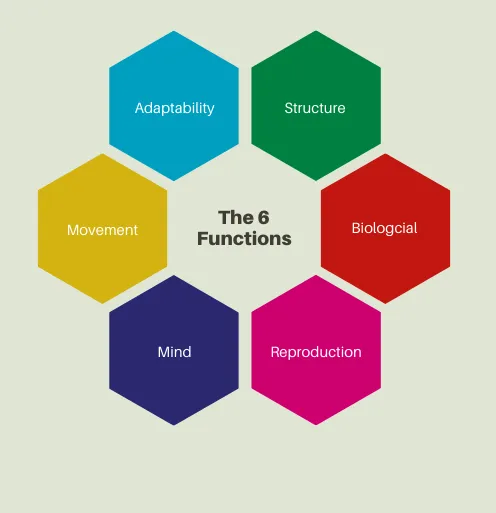Global Healing. At Home or Abroad
Explore Regenerative Medicine, Virtual Health Consulting & Trusted Medical Equipment All Backed by U.S. & Canadian Patient Success.
Hey, my name is justyn and I am the EC health coach

Hi, Welcome, Howdy,
I love talking about health and wellness. Dont you?
Most people agree... health is wealth. As the website says we will all die. Its true. The issue we at Rejenivate have is that we can live lives free of most issues as we focus on overcoming our 6 biological functions and adapting our cells which will
My job is to improve your condition, and I would love to meet you.
-Justyn
Ps- I haven't been sick in 20 years.
*I am not a doctor, nor a medical professional and do not diagnose treat or cure any diseases. What I do though is talk about real health and wellness and the secrets of being able to live life well without alot of the health issues of life. If you want to improve your condition, I look forward to talking to you.
Treatments and Therapies
Trusted by thousands for safe, effective outcomes—our advanced therapies use high-potency mesenchymal stem cells (hypoxic & normoxic) and exosomes.

Cancer Treatments
Experience innovative cancer care through personalised therapies including stem cell support, immunotherapy, and holistic protocols designed to enhance recovery, reduce side effects, and improve quality of life.

Fountain of Youth Protocol for Women
Feel younger, look fresher, and boost your health with our advanced anti-aging solutions.

Diabetes: Type 1 and Type 2 Treatments
Stem cell therapy offers new hope for diabetic patients—restoring health, energy, and vitality.

Health Optimization and Sports Recovery
We deliver advanced regenerative and preventative therapies tailored for the modern athlete.

Orthopedic & Sports Injuries
Support recovery and restore mobility with advanced regenerative therapies for joint and soft tissue injuries.

Spine and Disc Conditions
Regenerative therapies designed to ease back and neck pain, healing conditions like herniated discs, sciatica, and more.

Autoimmune Diseases
Regenerative treatments for autoimmune conditions such as lupus, rheumatoid arthritis, and more.

Glow & Rejuvenate
Stem cell therapy revitalizes the skin, smooths out wrinkles, boosts collagen production and the signs of aging.

Crohn’s Disease and UC
Stem cell therapy aids in gastrointestinal healing, reduces inflammation, and improves symptoms of Crohn’s disease.

Chronic Pain
Customized care to manage chronic pain from joint pain, injuries, autoimmune diseases, and degenerative conditions.

Osteoarthritis
Regenerate cartilage, relieve joint pain, and slow down osteoarthritis with advanced stem cell treatment.

Multiple Sclerosis (MS)
Stem cell therapy may regenerate damaged tissue, reduce inflammation, and slow MS progression.

Neurological Conditions
Innovative therapies designed to support recovery from MS, brain and spinal injuries, stroke, and other neurological disorders.

Rheumatoid Arthritis (RA)
Stem cell therapy stimulates healing, relieves joint and body pain, and may slow the progression of rheumatoid arthritis.

Sexual Wellness and ED
Experience renewed vitality and improved performance with treatments designed to enhance intimacy and quality of life.

Spinal Cord Injuries (SCI)
Specialized treatments available for traumatic SCI and both complete and incomplete spinal cord injuries.
Health Starts in the Cells...
We help you put your cells in the best condition to defend against stress and heal naturally with Accelerated Wellness!
What is Accelerated Wellness ?
We created a completely new category of Health & Wellness Center. Our Ground breaking science and Technology meetsexpert guidance to help you proactively optimize body, mind& Soul – no matter where you are on your health journey
The goal with our Rejenivate Approach is to provide programs, coaching, and advanced technology to improve all 6 elements of the body(Structures, Biological Process, Adaptability, Movement, Reproductive, Mind.)
By potentially improving the Body across many if not all cellular microenvironments we create the best condition for the cells to function. This help them to heal, overcome dysfunction, extend life, defy age, look and feel better... This work that we help our clients and members with can potentially create an Adapted Genetic Phenotype and improves natural stem cell count and function and MUCH MUCH MORE. This helps you live, and feel better. Imagine, much less stress and a beautifully rejuvinated body and mind helping you along on you health journey.

Our Resource
Discover a trusted hub for valuable insights, expert guidance, and personal development. Explore new possibilities and elevate your journey with our thoughtfully curated content. Begin your transformation today.

Why Patients from the U.S. Trust Rejenivate for Stem Cell Therapy in Mexico
Every year, more patients from the United States travel to Rejenivate in Mexico for trusted, cutting-edge stem cell treatments. With personalized care, transparent pricing, and world-class facilities, Rejenivate offers a safe and effective alternative to traditional therapies—helping clients avoid surgery, reduce pain, and restore mobility naturally.

Real Patient Results: How Rejenivate Helped Change Lives
From chronic pain relief to faster injury recovery, Rejenivate has helped clients reclaim their health through advanced regenerative therapies. Backed by real testimonials and measurable outcomes, our personalized treatment plans empower people to heal, thrive, and return to the life they love—without invasive procedures or long-term medications.

Discover Rejenivate: Mexico’s Leader in Regenerative Medicine
Rejenivate is redefining the future of wellness with cutting-edge regenerative therapies delivered in a safe, luxurious, and affordable environment. As a trusted leader in Mexico, we specialize in stem cell and alternative treatments designed to restore vitality, improve quality of life, and support long-term healing for patients from around the world.
Start Your Journey to Health and a Better Quality of Life.
Here's how to do it.

1. Schedule a Consultation
Upon approval of your application, our doctors will design a personalized treatment plan based on your specific needs.


2. Receive Treatment
Our patient concierge will help you arrange your customized stay and accommodations to receive your treatment.


3. Follow Up
After treatment, our team will follow up with your at regular intervals to monitor progress and provide support to ensure the best possible results.
Mission
Help you feel the change now; so you can live feel, and be better. We improve your condition and help assist in the improvement of your genetic phenotype, so your longevity, health, & your natural regenerative function is in the best condition.
Rejenivate Programs
Feel the Change Now & Upgrade Your Cells & Health

Treatment Plans
At Rejenivate, we offer personalized treatment plans designed to address the root causes of health issues and promote long-lasting wellness. Our approach combines advanced medical therapies with holistic practices to support the body's natural healing abilities.
Each treatment plan begins with a thorough evaluation of your health status, including:
Medical History Review: Understanding your past and current health conditions.
Physical Examination: Assessing your overall physical health.
Advanced Diagnostic Tests: Conducting lab tests to identify underlying health issues.
Detoxification and Nutritional Support
Detoxification and nutrition are integral components of our treatment plans. We provide:
Personalized Detox Programs: Designed to cleanse the body of toxins and support overall health.
Nutritional Guidance: Offering advice on diet and supplements to enhance healing and maintain wellness.
At-Home Wellness Tools: Through our store, clients can access world-class wellness tools including at-home HBOT (Hyperbaric Oxygen Therapy) units, red light therapy devices, and premium nutritional supplements.
At-Home Lab Testing: We also offer a range of at-home lab kits for DNA testing, vitamin and mineral deficiency analysis, and other essential diagnostics making advanced health insights more accessible than ever.


Regenerative Medicine and Stem Cell Therapy
Our regenerative treatments aim to repair and rejuvenate the body, including:
Stem Cell Therapy: Utilizing ethically sourced stem cells to regenerate healthy cells and tissues.
Exosome Therapy: Employing exosomes to promote healing and tissue repair.
NAD Therapy: Boosting cellular energy and promoting overall vitality.
Therapies and Wellness Programs
We integrate various holistic therapies to support your healing journey:
Biofeedback: Using diagnostic quantum bio-frequency technology to correct psychophysiological imbalances.
Healing Therapies: Combining contemporary science with ancient healing techniques for natural cellular regeneration.
Superior Nutrition: Offering customized super diets and elite-level nutritional supplements to achieve and maintain vibrant health.


Treatment Program Structure
Our treatment programs typically follow a three-phase approach:
Analysis: Comprehensive health assessments to identify the root causes of health issues.
Healing: Implementing detoxification, stem cell therapies, and holistic treatments to restore health.
Maintenance: Ongoing support and therapies to maintain optimal health and prevent future issues.
Treatment Costs and Scheduling
After reviewing your health intake form and diagnostic results, our Patient Advisor Team will provide:
Treatment Protocol: A detailed plan outlining the recommended therapies.
Cost Estimate: An overview of the costs associated with the treatment plan.
Treatment Schedule: A timeline for the treatment process.

Do You Feel Like Your Health is Declining or not where you want it?
We are a certified Wellness Facility. The foundation of our space combines the physical with an inner journey.
Combined with amazing Rejenivate Health Coaches, we help you achieve positive health and wellness outcomes. By integrating body, breath, movement, and awareness, we strive to promote an understanding of the interdependency of all these aspects in your personal health and wellbeing while combining the words best technologies and modalities to affect the body's 6 functions in a positive way by adapting the body from all the Negative Stressors and helping to create positive stressors that impact the body in a optimal way for a cellular change so that not only can you feel it but it will help you create the best cellular expression for your cells and may enhance your genetic phenotype while improving your life and the future of your quality of life experience. At Rejenivate, we combine the worlds best options in a wellness spa environment to help you live, feel and be better...
Come "Experience The Change" Now!
How does it work ?
We as human beings are Aging, or dying slowly with time and after we become 30 years old we start to change...
The Hallmarks of Aging, and Aging itself affect our bodies, cells and our biomarkers. We have 37 Trillion cells. Our risk for disease and dysfunction increase as we age. Yes we will all pass... but you can either be someone with high accumulations of stress an irreversible cell damage or you could have a adaptive state that thrives internally with reversible and regenerative possibilities. We believe in providing the body with positive stressors over time that create an adaptive response and help slow down aging while helping you create your best life with experiential wellness.
In as little as 30 to 60 min a couple times a week you can feel a positive change, help create greater bone density, lower your rate of aging, decrease inflammation, modulate your immune system, optimize sleep, & boost energy all while burning calories and losing weight. This helps defy aging. We can also do much more to help you along on your journey.
Come in and lets talk about health and create a customized plan for you and and take your health and wellness to the next level.
Get ready to meet the best version of you.

COMPANY
WORK WITH US
RESOUCES
CONNECT
© Copyright 2023. Rejenivate EC LLC . All rights reserved.
*REJENIVATE EC LLC. We look forward to helping you on your wellness journey. Medical services available to clients of Rejenivate EC are provided by an independently owned physician practice. Please note that a number of our services and products are not evaluated and/or approved by the FDA and those services and products are not intended to diagnose, treat, cure or prevent disease. We do not provide medical advice, diagnosis, or treatment through this Website or at its locations. We are not providing health care, medical or nutrition therapy services or attempting to diagnose, treat, prevent, or cure in any manner whatsoever any physical ailment, or any mental/emotional issue, or disease, or condition. We are not giving medical or psychological advice whatsoever. The purpose of this website or its locations is to explore current research and discussions of holistic and healthy lifestyle factors that are typically not discussed in the realm of modern allopathic medicine.
*Testimonials reflect individual experiences of real customers, are applicable solely to the individual depicted, and are not necessarily representative of all who use Rejenivate EC Wellness products and services. Results do vary and are unique to each individual. Customers providing testimonials are gifted free services for their time. Testimonials are not intended to make claims that these products can be used to diagnose treat, cure, mitigate or prevent any disease. Medical services available to clients of Restore are provided by an independently owned physician practice.

Every patient must first be assessed by our specialists to understand their specific health needs and provide the most effective treatment options.
Navigation
Rejenivate
Contact Us
1309 Coffeen Ave, Suite 1200, Sheridan, WY 82801, United States
Opening Hours : Mon-Sat 9:00-20:00
USA/CAN : (202) 351-1497
Email : {{location.emial}}
© Copyright 2025. Rejenivate LLC . All rights reserved.
*REJENIVATE LLC. We look forward to helping you on your wellness journey. Services available to clients of Rejenivate are provided by an independently owned physician practice. Please note that a number of our services and products are not evaluated and/or approved by the FDA and those services and products are not intended to diagnose, treat, cure or prevent disease. We do not provide medical advice, diagnosis, or treatment through this Website or at its locations. We are not providing health care, medical or nutrition therapy services or attempting to diagnose, treat, prevent, or cure in any manner whatsoever any physical ailment, or any mental/emotional issue, or disease, or condition. We are not giving medical or psychological advice whatsoever. The purpose of this website or its locations is to explore current research and discussions of holistic and healthy lifestyle factors that are typically not discussed in the realm of modern allopathic medicine.
*Testimonials reflect individual experiences of real customers, are applicable solely to the individual depicted, and are not necessarily representative of all who use Rejenivate Wellness products and services. Results do vary and are unique to each individual. Customers providing testimonials are gifted free services for their time. Testimonials are not intended to make claims that these products can be used to diagnose treat, cure, mitigate or prevent any disease. Medical services available to clients of Restore are provided by an independently owned physician practice.
